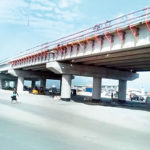“But also one of the most permanent features of human development has been that these boundaries have to keep changing and, generally, expanding in order to incorporate others, who do not have the same ancestry, but who move in due to all sorts of factors and constitute a dynamic factor in improving the cultural, technological, economic and even political levels of the community. Human progress at all levels, even at the level of genetic development, is inseparable from immigration and the inter-mixing of different groups to form new groups. But this process always challenges the existing order and generates tension, stresses, which can be used to set off violent conflicts. These are lessons of history we have to face in Nigeria, as others are facing them in all countries of the world. The communal conflicts in Nigeria which, since the 1980s, have become more frequent, more widespread and more violently destructive of life and property, are indications of failures to tackle and peacefully resolve the current manifestations of this age-old problem of the relationships between public safety, identity, the boundaries of the community, the basis of citizenship rights and social, economic and political progress.
Since 1980, some of the well-known incidents of violent communal conflicts in the country were:1. the Kasuwar Magani conflict, Kaduna State, in 1980, 2. the Maitatsine Uprising, Kano City, in December, 1980;3. the Ife-Modakeke conflicts, in April, 1981;4. theMaitasine Uprisings of Kano, Kaduna and Maiduguri, in October 1982; 5. the Maitatsine Uprising, Yola, February, 1984; 6. the Matitasine Uprising, Gombe, April, 1985: 7. the conflicts in Numan and neighbouring areas of Adamawa State, in 1986-88; 8. the conflicts in Kafanchan. Kaduna Zaria and other parts of Kaduna state, in March 1987; 9. the conflicts at Wukari, Takum and other parts of Taraba and Benue States, in 1990-1992; 1999-2002; 10. the conflict in TafawaBalewa and other parts of Bauchi State, in 1991, and 2000-2001; l1. the conflict in ZangoKataf and other parts of Kaduna State,in February and May, 1992; 12. the conflicts in Obi and Toto LGAs and neighbouring areas of Nassarawa State, in 1995-1999; 13. the conflict in the Andoni and Ogoni areas of Rivers State, in 1993- 94;, 14.the conflict in KarimLamido LGA. Taraba State, in 1996-1997; 15. the conflict in the Ogoni and Okrika areas of Rivers State in 1994- 1996; 16.the conflicts in Nembe and Kalabari areas of Bayelsa State, in 1996-1999;17.the conflict in the Bassambiri and Ogbolomabiri areas of Bayelsa State, in the 1990s; 18. the conflict in the Okpoma Brass areas of Bayelsa State in the 1990s; 19.the conflict in the Sangama, Soku and Oluasiri areas of Rivers and Bayelsa States in 1993-2001; 20. the conflict in the Burutu LGA, of Delta State in 2000-2001; 21.the conflicts in Warri and its environs, 1997-2002, among others.
There were of course many other cases of violent communal conflicts which did not get prominent treatment in the media or by the government and opinion leaders and politicians. The violent clashes between Fulani and other nomads and Hausa and other peasant farmers in the Sahelian states of Kebbi, Sokoto, Katsina, Kano, Jigawa, Yobe, Borno, Bauchi, Gombe, and in the other central Nigerian states, hardly receive much attention in the media and by the State Governments and at the Federal Government levels. They are not only, almost annual, events but, the destruction of lives, livestock and property involved, is significant. But since these violent communal conflicts, between farmers and nomads, occur entirely in the rural areas, the governments do not seem to feel threatened by them and accord them low priority, as they generally do with the whole of rural Nigeria.
For most of the media, a report of a conflict between Hausas and Fulanis, even when their reporters, ensconced in the urban centers, learn about this, is not attractive for coverage. It exposes as questionable, the dominant dichotomies of conflict they insist on imposing on the general domestic and foreign perceptions of Nigeria politics which are, that it is has, and has always been, a matter of rival. versus the South; Christians versus Muslims: Hausa-Fulani versus Middle Belt minorities; and Hausa-Fulani versus the rest. Therefore, over this and other types of conflicts, government pronouncements and media reports do not give an adequate picture of the extent of violent communal conflicts in the rural areas of Nigeria, particularly where they do not involve the disruption oil production, or, oil pipelines. Some indications of the extent of the reporting of these conflicts may be obtained from State Security Service and Nigeria Police returns from their local government offices. But it is not clear how much of this is systematically assessed and compiled, to build a broad picture for the each LGA, each State, and for the whole country, to make possible a comprehensive and sustained nation-wide analysis of the pattern, nature, causes, courses, and consequences, of all incidents of violent communal conflicts.”
- Teniola, a former director at the Presidency, livess in lagos.






